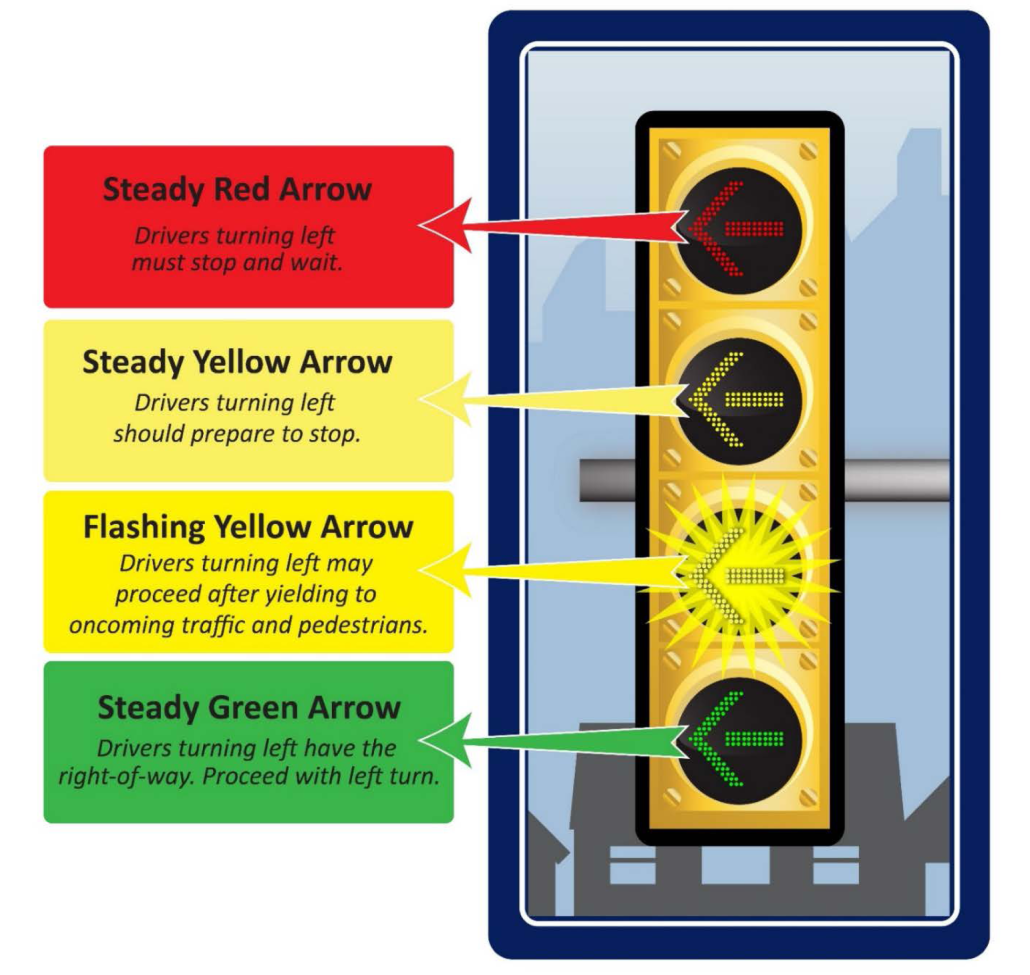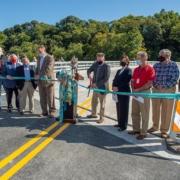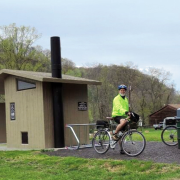What Do Flashing Yellow Signals Mean For Your Municipality?
A new flashing yellow signal has been installed in the Harrisburg area.
It’s the first in Pennsylvania, but flashing yellow signals have been implemented throughout the country.
Studies show they improve safety and reduce left-turn crashes. They can also keep traffic moving more efficiently.
Read on to learn more about their benefits and how much it would cost to convert a traffic signal to this new technology.

Have you seen the new flashing yellow arrow traffic signals?
PennDOT recently unveiled Pennsylvania’s first one in Lower Allen Township, Cumberland County at the intersection of Route 15 and Rossmoyne Road (shown above).
Over the next several months, PennDOT will monitor this intersection to see if the flashing yellow arrow helps to reduce accidents at this location. If it does, these signals will likely be deployed throughout the state.
How does a flashing yellow arrow work?
Historically, drivers making a left turn have had the right-of-way when the traffic light showed them a green arrow. There is no opposing traffic during a green arrow light, so drivers making a left turn don’t have to worry about other cars entering the intersection as they turn.
When a green circle is displayed, however, drivers can only make a left turn if there is no traffic coming from opposing directions. Drivers must first check for opposing traffic and then turn if the roadway is clear.
Under this new system, the flashing yellow arrow will replace the green circle. When a flashing yellow is displayed, drivers will be able to make a left turn, but they must first yield to any oncoming traffic.
Graphic excerpted from PennDOT’s Flashing Yellow Arrow Fact Sheet
Why is the flashing yellow beneficial?
Drivers intuitively associate yellow with caution, so they are more likely to understand that they can only turn if there is no opposing traffic than they are with a solid green circle (which our brains associate with the direction to Go.)
In fact, a study by the Federal Highway Administration has shown them to reduce left-turn accidents by as much as 20%. This is one of the reasons the Route 15/Rossmoyne Road intersection was selected for the first flashing yellow signal in the state. More than 80% of the accidents at this intersection have involved left-turn movements (37 in the last four years).
In addition to improving safety, flashing yellow arrows can keep traffic moving more efficiently by providing more opportunities for left turns to occur. At intersections that previously went from green arrow to solid yellow, drivers will have an additional phase for left-turning movements. This, in turn, reduces delay and can eliminate complaints municipalities sometimes receive about frequently backed-up intersections.
Will municipalities be required to convert their traffic signals to this new flashing yellow arrow format?
No, there is no requirement for municipalities to implement flashing yellow signals at this time. Right now, PennDOT is testing the technology and seeing if it provides similar benefits in Pennsylvania to what is has provided elsewhere.
How much would it cost to convert municipal traffic signals to this new format?
In order to follow the new flashing yellow format, municipalities would only have to change their signal heads, not the mast arms. The new flashing yellow signal in Lower Allen Township cost $6,000 to install, but costs vary, depending on the existing signal operation and the number of directions that the arrow is being installed.
This number does not include engineering fees, which cover the cost of traffic counts, analysis, and a permit update, and can range between $4,000 – $6,000.
All told, a municipality can expect to pay between $8,000 – $14,000 for both construction and engineering fees associated with the implementation of a flashing yellow traffic signal.
For flashing yellow arrows to reduce accidents, as intended, drivers must understand what they mean. Therefore, PennDOT has undertaken an extensive public education effort. You can view a video that explains how the signals work and read a fact sheet about them on PennDOT’s website.
For any questions you might have about how a flashing yellow arrow might benefit your community or what implementation would entail, contact Darren Myer, HRG’s transportation manager for Western PA, or Eric Stump, our transportation manager for Central PA.
Darren Myer, P.E., PTOE , has more than 16 years of experience in roadway and traffic engineering. He serves as traffic engineer for multiple townships and municipalities within Western Pennsylvania. His areas of expertise include traffic studies, signalization, roadway design, and the review of traffic impact studies and land development plans.
, has more than 16 years of experience in roadway and traffic engineering. He serves as traffic engineer for multiple townships and municipalities within Western Pennsylvania. His areas of expertise include traffic studies, signalization, roadway design, and the review of traffic impact studies and land development plans.
Eric Stump, P.E., PTOE , has 14 years of experience and serves as the Traffic Team Leader for HRG’s Eastern Region. His experience includes preparing traffic impact studies for developments, reviewing traffic impact studies for municipalities, preparing traffic signal permit and construction plans, developing coordination programs for traffic signals in a system, and preparing PennDOT Highway Occupancy Permit applications.
, has 14 years of experience and serves as the Traffic Team Leader for HRG’s Eastern Region. His experience includes preparing traffic impact studies for developments, reviewing traffic impact studies for municipalities, preparing traffic signal permit and construction plans, developing coordination programs for traffic signals in a system, and preparing PennDOT Highway Occupancy Permit applications.









